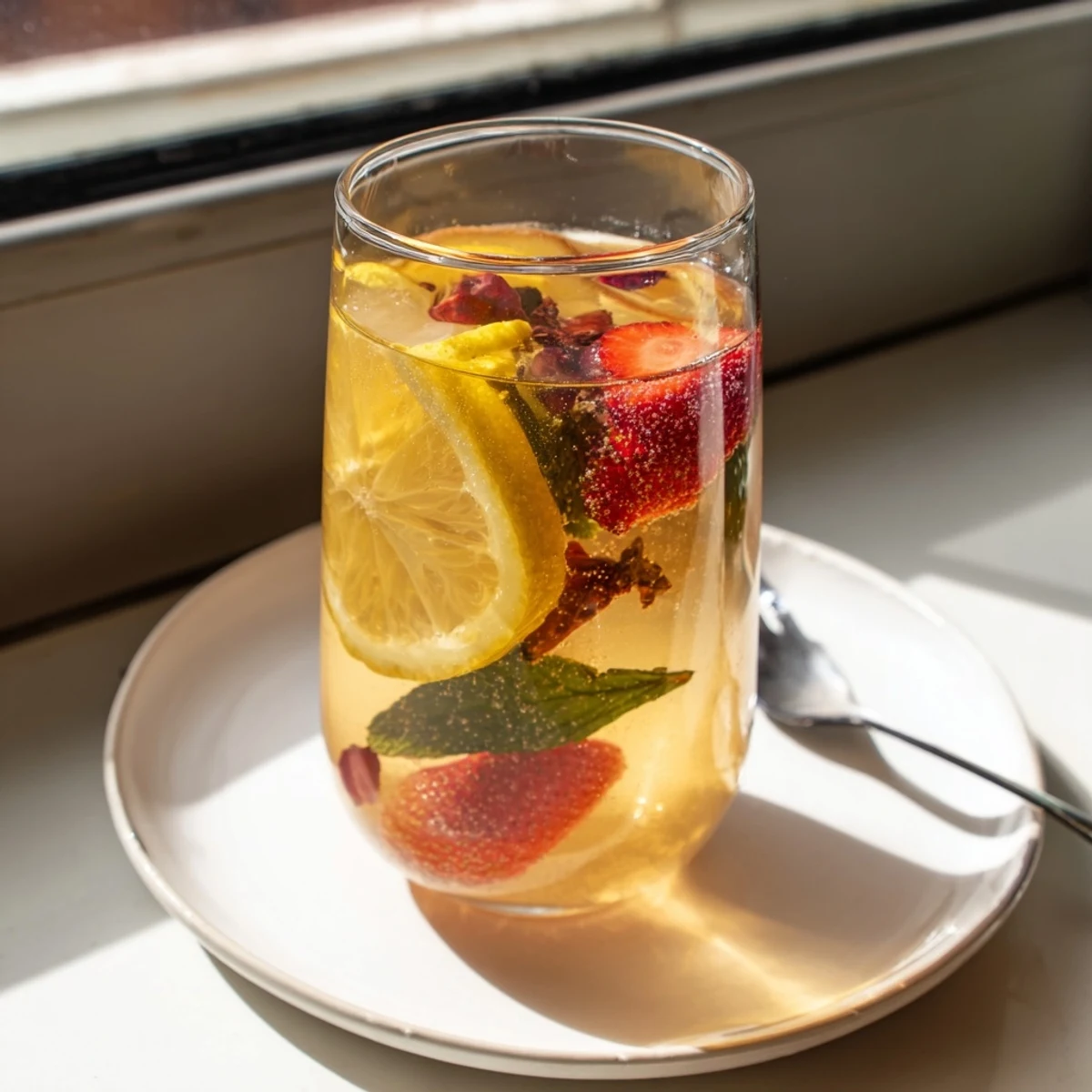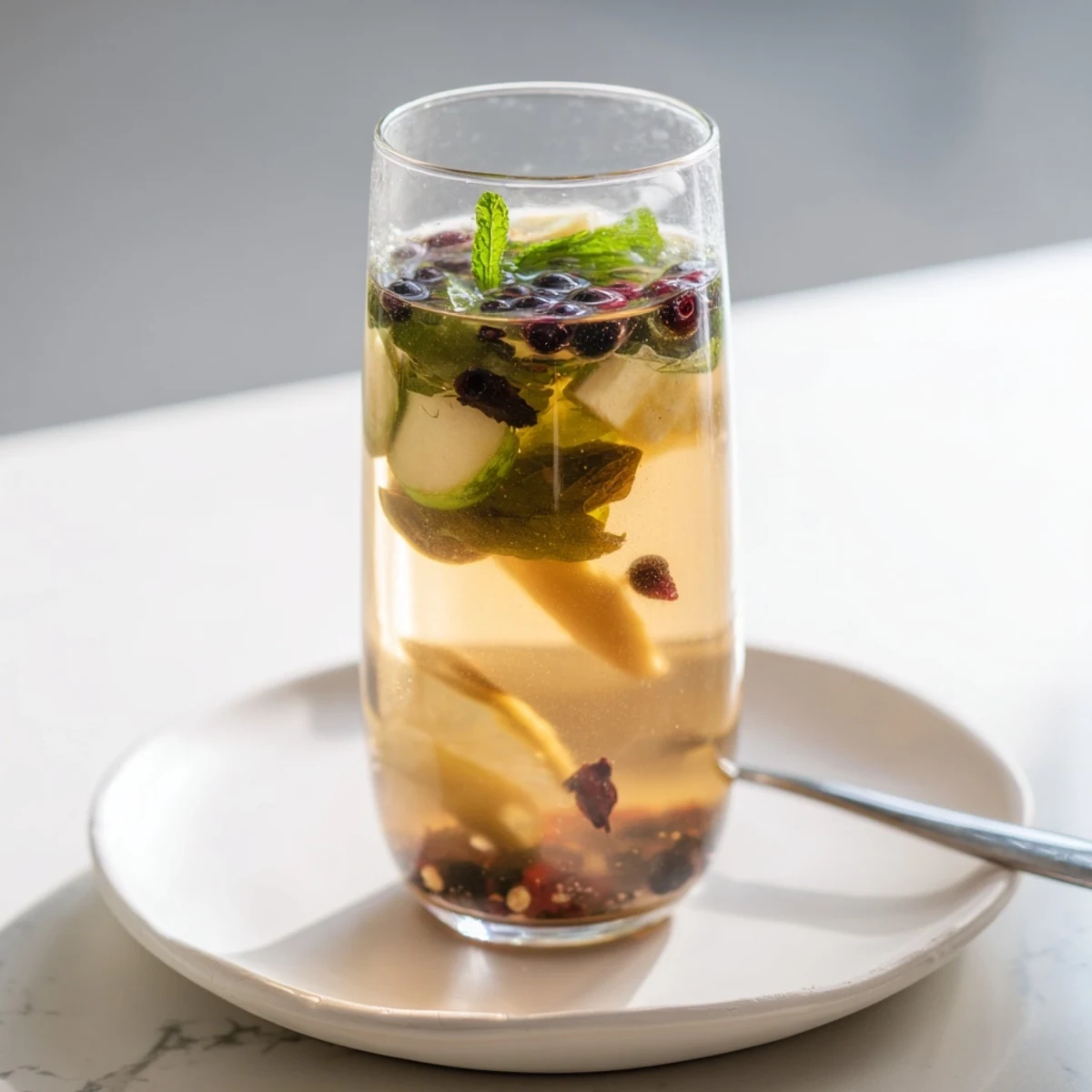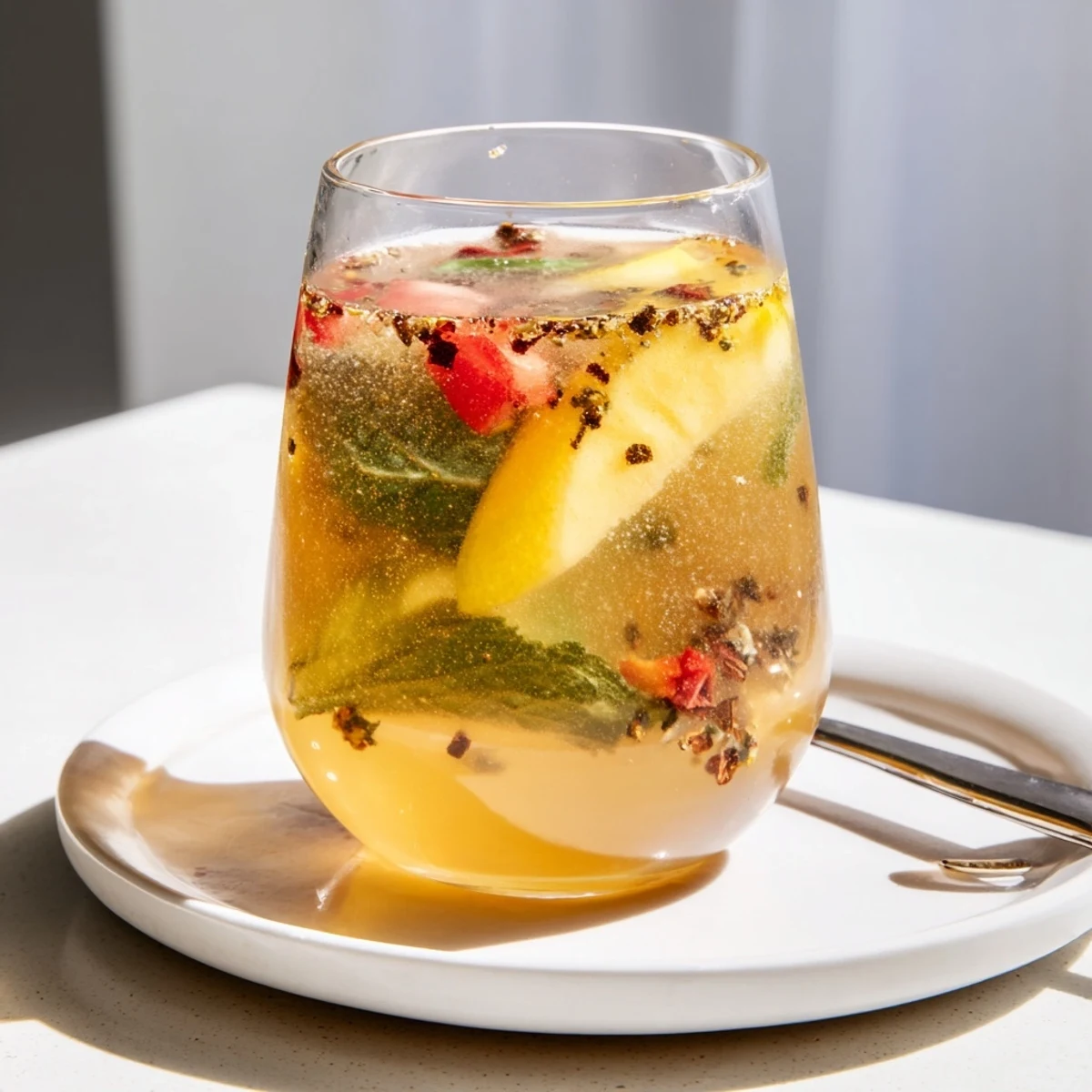 Pin
Pin A refreshing collection of naturally fermented beverages inspired by kombucha, perfect for enjoying as healthy, alcohol-free mocktails with complex flavors and gentle fizz.
I first tried making kombucha-style mocktails during a summer family gathering. It was a fun way to experiment with flavors and everyone loved the tangy, refreshing twist each batch offered.
Ingredients
- Filtered water: 2 liters
- Black or green tea: 8 bags or 2 tablespoons loose-leaf tea
- Granulated sugar: 200 g (1 cup)
- Kombucha SCOBY or starter liquid: 1 SCOBY or 200 ml unflavored store-bought kombucha
- Flavoring Options (choose 1–2): 100 g fresh berries, 1 lemon or lime (thinly sliced), 1 small knob fresh ginger (sliced), 1 sprig fresh mint or basil, 2 tablespoons fruit juice, 1 tablespoon dried hibiscus petals, 1 cinnamon stick or 3–4 whole cloves
Instructions
- Brew the tea:
- Boil 2 liters of filtered water. Add tea bags or loose-leaf tea and steep for 10 minutes. Remove tea bags or strain out leaves.
- Add sugar:
- While the tea is hot, stir in the sugar until fully dissolved. Let the sweetened tea cool to room temperature (important: hot liquid can kill the SCOBY).
- Combine and ferment:
- Pour the cooled sweet tea into a large, clean glass jar. Add the SCOBY and starter liquid (or store-bought kombucha).
- Cover and store:
- Cover the jar with a clean cloth or paper towel secured with a rubber band. Store at room temperature, away from direct sunlight, for 5–7 days.
- Check and taste:
- After 5 days, taste your brew daily. When it is tangy and slightly fizzy, it is ready for the next step.
- Flavor and bottle:
- Remove the SCOBY and 200 ml of kombucha to use as starter for your next batch. Add your chosen fruits, herbs, or spices to the kombucha.
- Bottle and ferment:
- Pour into clean bottles, leaving about 2–3 cm headspace. Seal tightly. Ferment at room temperature for 1–3 more days for extra carbonation.
- Refrigerate:
- After desired carbonation is reached, refrigerate bottles. Strain out solid flavorings before serving.
 Pin
Pin My family loves to gather and taste-test new flavor combos. The kids get excited watching the fizz form, and everyone enjoys customizing their own bottle with favorite fruits and herbs.
Required Tools
Large glass jar (2–3 liters), fine mesh strainer, funnel, clean glass bottles, measuring cups and spoons
Allergen Information
Contains caffeine (from tea). May contain traces of gluten if using flavored teas. Possible cross-contamination with nuts or other allergens if adding flavorings; check all labels.
Nutritional Information
Calories: 45, Total Fat: 0 g, Carbohydrates: 11 g, Protein: 0 g (per serving)
 Pin
Pin Enjoy your homemade fermented mocktails chilled, poured over ice for a refreshing treat any time of year.
Recipe Q&A
- → What teas work best for the base?
Black and green teas provide ideal flavors and nutrients for fermentation, yielding a robust, tangy base.
- → How can I tell when fermentation is complete?
Taste daily after five days; when it’s tangy, lightly fizzy, and not too sour, it’s ready for flavoring and bottling.
- → Which fruits and herbs make good infusions?
Try fresh berries, citrus slices, ginger, mint, basil, fruit juices, hibiscus petals, cinnamon sticks, or cloves for unique profiles.
- → How do I increase carbonation?
Bottle the drink with added fruits or herbs, leave at room temperature for 1–3 days, then refrigerate once desired fizz is achieved.
- → Is this beverage suitable for special diets?
Yes, it’s vegan and gluten-free if using certified ingredients; check for allergens in flavorings to ensure safety.
- → What jars and bottles should I use?
Always use large glass jars for fermentation and seal the final drinks in clean glass bottles with tight-fitting lids.

